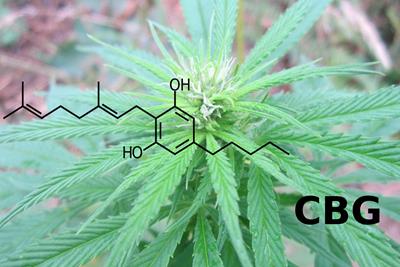
Tuesday October 15, 2019
By Andrew Ward
 Education
Education
Much of the consuming public's focus on cannabis centers on two cannabinoids, THC and CBD. While justified, scores of other cannabinoids are worth discussing. In some cases, lab studies are underway to determine just how they may help us. Cannabigerol (CBG) is one such cannabinoid. Its ability to possibly treat scores of conditions without getting the consumer high has some relating it to CBD.
What CBG Is and Isn’t
Cannabigerol (CBG) is a prominent cannabinoid in the cannabis plant. Serving as a chemical precursor, CBG has a part in the creation of the cannabinoids THC and CBD. CBG is created when CBGA is exposed to UV light. The same can occur when it is heated, or decarboxylated.
The non-psychoactive compound CBG reacts with the body's cannabinoid receptors in the brain. Acting like another non-psychoactive compound, CBD, CBG can offset the effects brought on by THC consumption. This is likely a result of the cannabinoid’s interaction with CB1 and CB2 receptors. It is believed that CBG interacts with CB1 receptors as a low-affinity antagonist. Its activity and impact on the CB2 receptor, and its effects on the body, is not known. To date, no completed studies on CBG have been released.

CBG and CBD certainly share some similar traits. As mentioned, both cannabinoids can offset the psychoactive effects of THC, but the compounds differ immensely from there. One of the more standout components of CBG is its ability to increase hunger. Studies on rats have been conducted while anecdotal evidence has suggested humans experienced a similar outcome.
How CBG May Help
CBG consumers have claimed the cannabinoid addresses scores of conditions and symptoms. Unfortunately, a lack of lab tests mean most claims are almost entirely anecdotal. However, in addition to the previously mentioned beneficial effects, CBG has been linked with a series of other possibly helpful outcomes. One of the more notable effects is its ability to act as an inhibitor of upticking GABA levels. GABA is a chemical in the brain that determines neuron stimulation levels which generate reactions. The lessening of GABA levels helps a person ease both mental and muscle tension. Studies have supported such findings since 1975.
Studies have also suggested that CBG could act as a viable anti-inflammation tool for people suffering from bowel issues like disease and colitis.
Other studies have suggested that CBG may also relieve glaucoma pressure while potentially having a positive impact on Huntington's disease as well. Furthermore, studies have suggested that CBG could help slow tumor growth. Consumers have also linked other possible health benefits to CBG. They include relieving general pain, serving as a sleep aid and improving moods. In some cases, CBG has been credited with promoting both bone and neuron growth as well.
Finding Strains Rich in CBG
Finding strains rich in CBG has become more accessible with its rise in popularity of non-psychoactive cannabis medication. While there is still significant room for growth, a few cultivators have made CBG a focus of their work. Bleu Berries from White Label is one of the more common choices. This strain remains rich in THC, at around 20%. However, its 1.85% CBG potency ranks higher than most other grown today.

Mickey Kush serves as one of the higher potency CBG strains in recent years. In 2013, the Odie Diesel produced flower was comprised of 3.1% CBG. However, higher potency strains are becoming popular. In July of 2019, CannabisNow profiled an Oregon cultivator who is creating high-potency CBG strains that clock in at around 15%. Similar to high-potency CBD, these cannabinoid-rich strains could open a new door for more efficient dosing and treatment for patients.
Several other high-potency CBG strains are available today, with more expected to come as demand continues to rise. In addition, we are starting to see more CBG Hemp products coming to market, including the world's first CBG Hemp Cigarette. While CBD may get all the attention, don’t sleep on CBG. It is likely to become a hot topic in the cannabis community sooner or later.
Have you ever knowingly consumed high-CBG strains or products before? What was your experience like? Share your thoughts in the comments below.
Photo Credit: MarihuanayMedicina (license)







